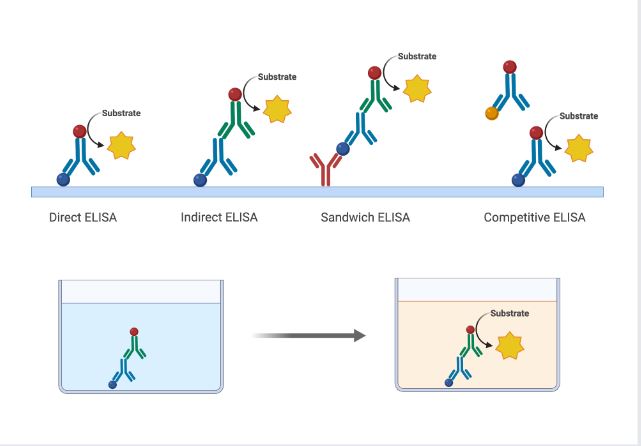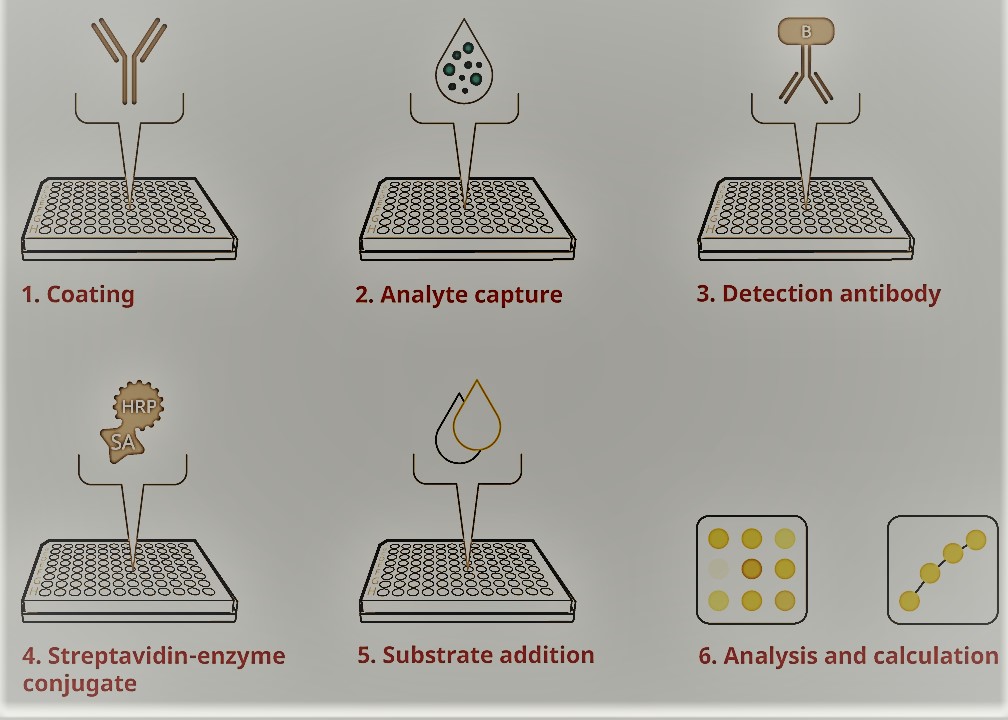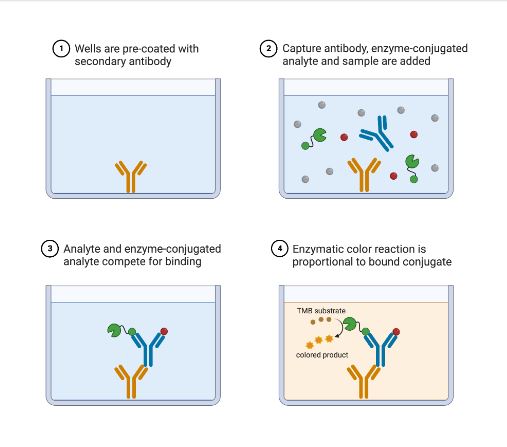Table of Contents
ToggleELISA stands for enzyme-linked immunosorbent assay. Eva Engvall and Peter Perlmann initially introduced the enzyme-linked immunosorbent test (ELISA) in 1971. It is now a widely used analytical biochemistry technique. In order to detect the presence of a ligand (often a protein) in a liquid sample, the test employs an enzyme immunoassay (EIA) solid-phase type that utilizes antibodies that are specific to the protein under study.

Definition of ELISA
Enzyme-linked immunoassay is commonly referred to as ELISA. A typical laboratory test is done to find antibodies in the blood. When the immune system of the body recognizes dangerous compounds, known as antigens, it produces a protein called an antibody. In addition to serving as a quality control check in a variety of businesses, ELISA has been employed as a diagnostic tool in biotechnology, medicine, and plant pathology.
Principle of ELISA test
The core concept of ELISA is the idea that certain antibodies bind the target antigen and measure the quantity and presence of antigen binding. The plate has to be coated with high-affinity antibodies to improve the assay’s sensitivity and accuracy.
The target antigen (or antibody) is captured in samples using a particular antibody (or antigen), and the target molecule is detected/quantitated using an enzyme reaction with its substrate in an enzyme-linked immunosorbent assay (ELISA).
Procedure for competitive ELISA
- An antigen-containing sample and an antibody are incubated.
- The microtitre wells pre-coated with the antigen are then added with the antigen-antibody combination.
- The plate is then rinsed clean to get rid of unbound antibodies.
- The addition of an enzyme-linked secondary antibody that is tailored to the primary antibody.
- The plate is rinsed to eliminate enzyme-linked antibodies that have not yet been attached to it.
- The substrate is added which the enzyme transforms into a fluorescent signal, in step six.

Types of ELISA
There are generally two types of ELISA. They are
- Indirect ELISA
- Direct ELISA
- competitive ELISA
- Indirect ELISA:
Indirect ELISA can be used to qualitatively or quantitatively detect antibodies. This method coats the microtiter well with antigen. The microtiter well is filled with serum or another material containing a primary antibody, which is then allowed to react with the coated antigen. A secondary antibody with an enzyme conjugation that attaches to the main antibody is added, any free primary antibodies are removed, and the primary antibody that has bonded to the antigen is then identified.
After washing away the unbound secondary antibody, an enzyme-specific substrate is applied. The enzyme hydrolyzes the substrate to produce colorful compounds. Spectrophotometric plate readers that can measure the absorbance of every well on a 96-well plate are used to calculate the quantity of colored final product.
2. Sandwich ELISA
Sandwich ELISA is capable of detecting antigens. This method coats the microtiter well with an antibody. The antigen-antibody complex is created when an antigen-containing material is put into the well and given time to interact with the antibody that is linked to the well. A second enzyme-linked antibody is specific for a different antigen epitope is added to the well after it has been washed and is then given time to react with the bound antigen. Then, washing is used to eliminate any unbound secondary antibodies. The substrate is introduced to the plate, and an enzyme hydrolyzes it to produce colored products.

3. Competetive ELISA
The antigen concentration in a sample is determined with this technique.
In this test, an antigen-containing material is first incubated in a solution with an antibody. The microtitre well that has been coated with antigen is then introduced to the antigen-antibody combination. The less free antibody will be available to attach to the antigen-coated well the more antigen is present in the sample. The quantity of primary antibody bound to the well is determined by adding an enzyme-conjugated secondary antibody specific for the isotype of the primary antibody after the well has been washed. The absorbance decreases with increasing antigen concentration in the sample.

Purpose of ELISA
- One can determine if a sample contains antigens or antibodies.
- Measuring serum antibody levels during a viral test.
- Employed in the food business to look for possible food allergies.
- Used to detect the spread of diseases including HIV, avian flu, the common cold, cholera, STDs, etc.






